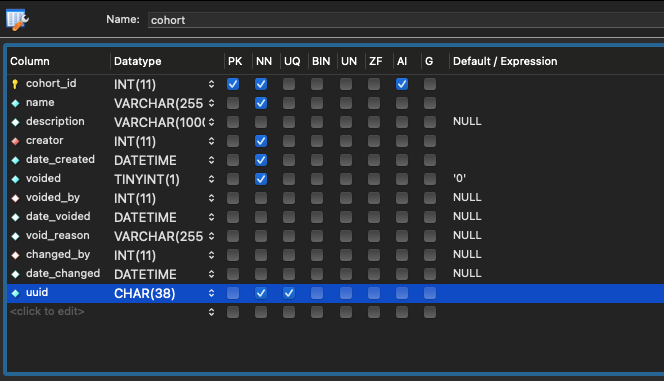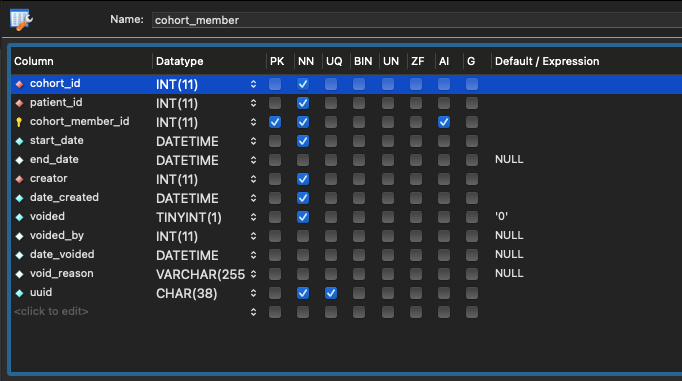Pertinent links:
As discussed at the last FHIR-Squad call meeting, in regards to support for the patient-list, we intend to extend/evolve the current OpenMRS core cohorts to meet the needs of the Group resource.
The current cohort data-model


Here are a few suggestions/modifications to the cohort table:
Adding of the attributes stated below:
-
characteristic(Group - FHIR v4.3.0) - How to be represented in OpenMRS (yet) to be determined. From my perspective, we will need a new entitycohort-characteristic. How would you represent this? -
type:openmrsObject | (anyResource)- Not necessary at this time. (I will be contented having Group.type → always patients for now)
FWIK, OpenMRS/ OpenMRS cohorts is 100% used for patients, howbeit if there is a use case for other entities/resources e.g animal, practitioner, device, medication, or substance. We will need to add a new attribute - type, which should map to the values of this value set group-type (Valueset-group-type - FHIR v4.3.0). That will require subsequent modification to the cohort membership entity.
To generate the list, you can use the defined characteristic or add members to the list manually - (this only applies when you have no defined characteristic). When both characteristic and members are present, then the members are the individuals who were found who met the characteristic. It’s possible that there might be other candidate members who meet the characteristics and aren’t (yet) on the list.
With large datasets, this poses a performance challenge, generating/querying the patient list on request… I would go for generating the list ahead of time with the specified characteristic and have a mechanism of updating the patient list frequently.
Hopeful at the end of this discussion, we should have an agreed plan for implementing/supporting patient-lists.
CC: @burke @ibacher @mseaton @mksd @jdick @mogoodrich @grace @jennifer @bashir @dkayiwa